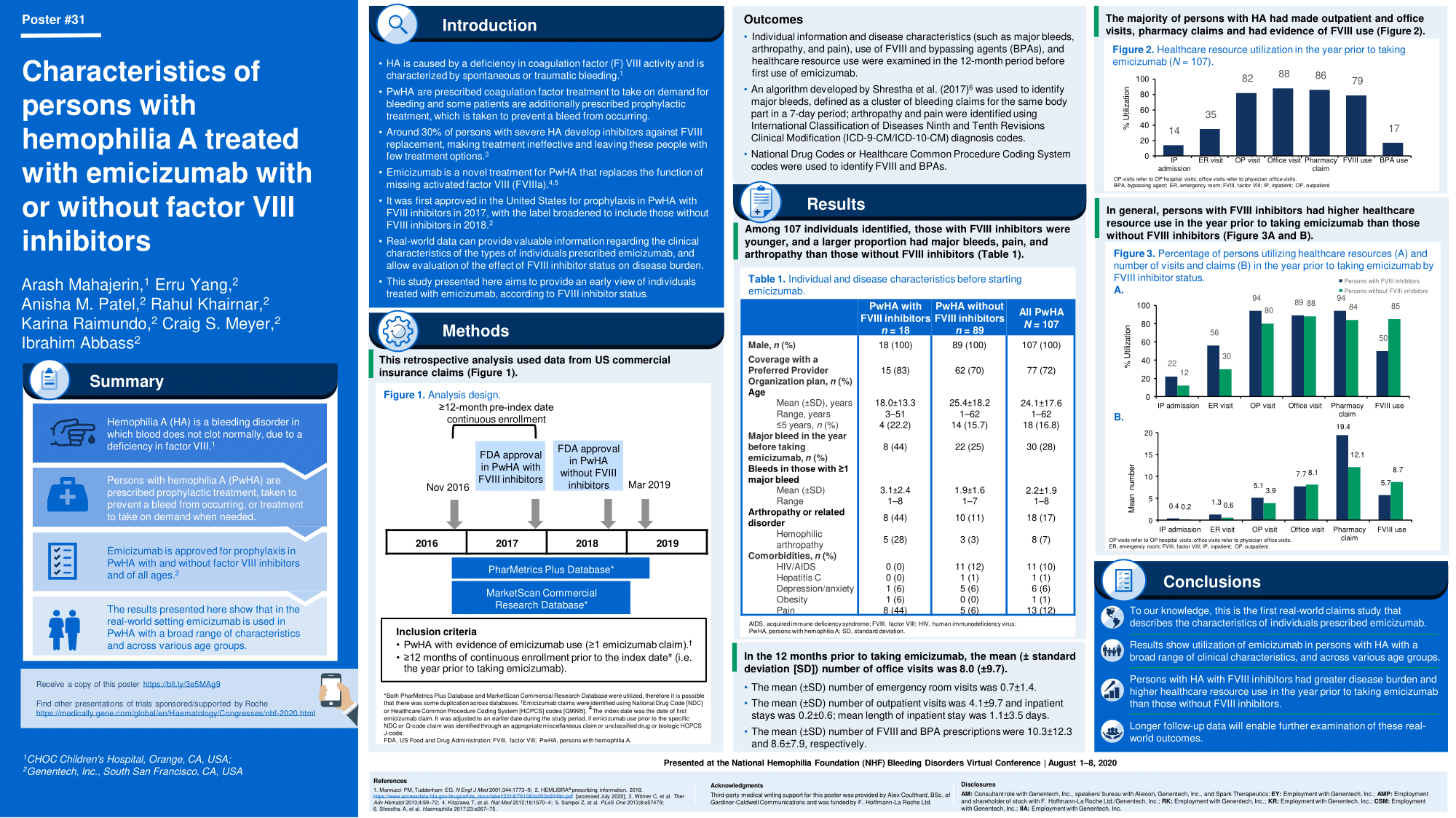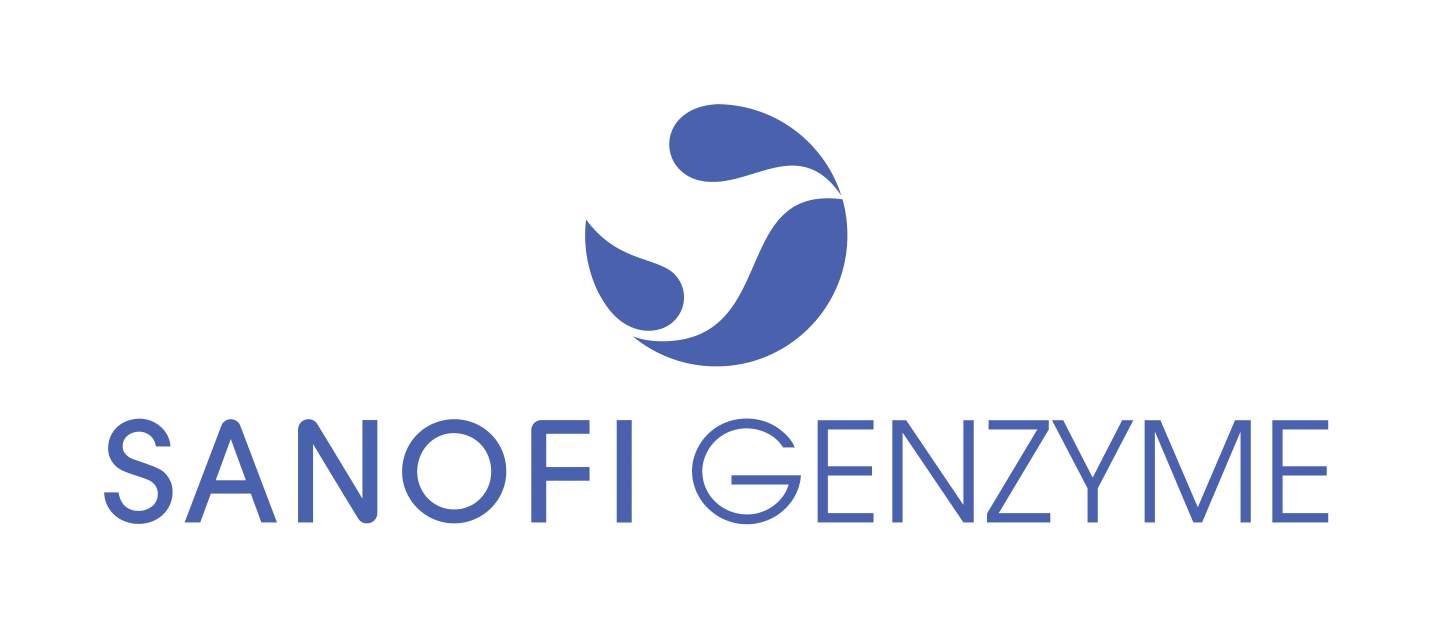National Hemophilia Foundation (NHF) - Posters
Characteristics of persons with hemophilia A treated with emicizumab with or without factor VIII inhibitors |
|
|
|

|
Objective:
Emicizumab is indicated for prophylaxis in persons with hemophilia A with or without factor VIII (FVIII) inhibitors to reduce or prevent bleeds. This study provides an early view of individuals treated with emicizumab, stratified by FVIII inhibitor status.
Methods:
This study used commercial claims data from MarketScan Commercial Research (11/201612/2018) and PharMetrics Plus (11/20163/2019) Databases. To be included in the study, individuals were required to have evidence of emicizumab use, and to be continuously enrolled in the 12-month period preceding first emicizumab use. Demographics, clinical characteristics (major bleeds, arthropathy, and pain), utilization of FVIII and bypassing agents (BPA), and healthcare resource use were examined in the 12-month period preceding first emicizumab use. An algorithm developed by Shrestha et al. (2017) was used to identify major bleeds, defined as a cluster of bleeding claims for the same body part in a 7-day period.
Summary:
A total of 107 patients with at least one emicizumab claim were identified. All patients were male (100%); average age was 24 years (standard deviation [SD]17.6; range=162) with 17% (n=18) aged ?5 years. In the 12-month period preceding first emicizumab use, 28% (n=30) had evidence of major bleeds, with an average of 2.2 bleeds (SD1.9; range=18) among those with at least one major bleed; 17% (n=18) had evidence of arthropathy and related disorders, and 12% (n=13) had a diagnosis of pain. A total of 79% (n=85) had evidence of FVIII use and 17% (n=18) had a BPA claim (evidence of FVIII inhibitors) with an average of 10.3 (SD12.3) and 8.6 (SD7.9) prescriptions, respectively. Individuals with FVIII inhibitors were younger (mean ageSD: 18.013.3 vs. 25.418.2 years), and a larger proportion experienced major bleeds (44% vs. 25%), had evidence of arthropathy (44% vs. 11%) and pain (44% vs. 6%) compared to those without FVIII inhibitors. Of the 107 patients identified, 35% (n=37) had at least one emergency room visit (meanSD=0.71.4); 14% (n=15) had at least one inpatient stay with mean length of stay of 1.1 (SD3.5) days; 82% (n=88) had at least one outpatient hospital visit (meanSD=4.19.7); and 88% (n=94) had at least one office visit (meanSD=8.09.7). Generally, individuals with FVIII inhibitors had higher healthcare resource use compared to those without FVIII inhibitors.
Conclusions:
To our knowledge, this is the first real-world claims study, which describes the characteristics of individuals initiating emicizumab, and underscores their disease and treatment burden. Results show utilization of emicizumab in patients with a broad range of clinical characteristics and across various age groups. Longer follow-up data will help to further examine these real-world outcomes.



